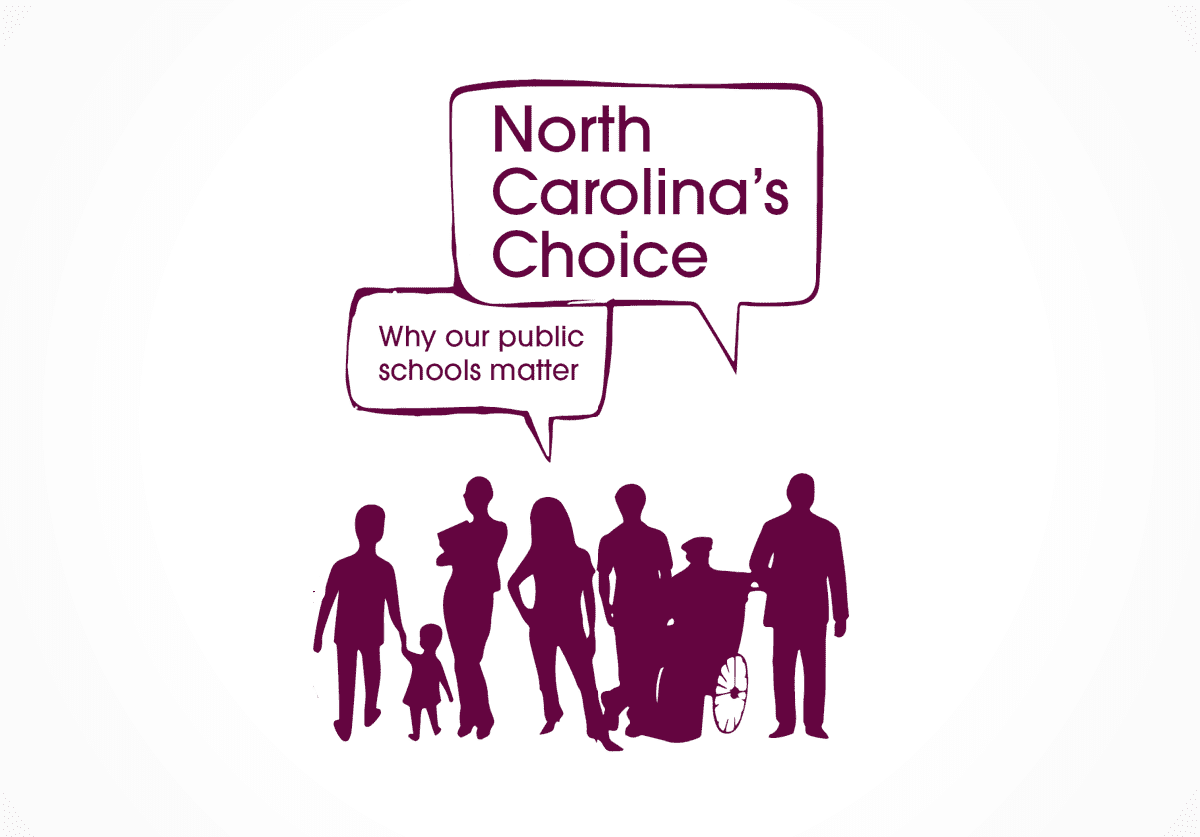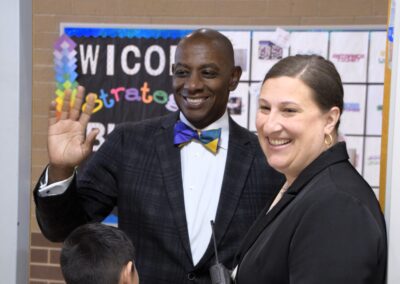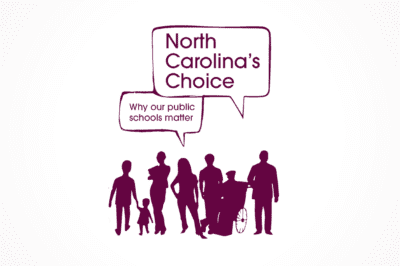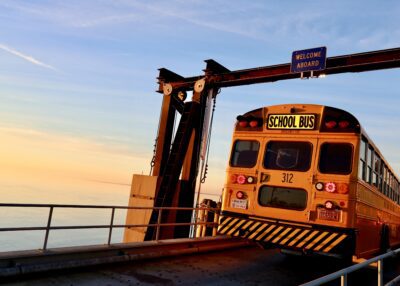
|
|
As a recent expansion of school choice is implemented in North Carolina and the race for superintendent of public instruction garners national attention, EdNC has published a book titled “North Carolina’s Choice: Why our public schools matter.”
We hope groups of people — from book clubs to professional learning communities (PLCs) — will read the book together and talk about it.
Here are some questions for discussion by chapter.
Preface
The preface and the chapter structure of the book explore the ripple effects of public schools and public education in North Carolina.
The book looks at “the role our public schools will play in economic development statewide, economic impact locally, as anchor institutions in communities, in building the diverse workforce the future requires, the provision of early childhood education, postsecondary access and opportunity, and the perception of this state we all call home.”
- What other ripple effects of public education come to mind and are important in your community?
Chapter 1 | The history of public education in North Carolina, and its role in economic growth
A 1993 report from the N.C. Department of Public Instruction remembers a time in North Carolina when there wasn’t access to public education.
“This was particularly true in the more rural areas,” says the report, “where sparse population, bad roads, poverty, and prevailing illiteracy often combined to create a self-perpetuating cycle of illiteracy and economic depression that was to haunt the people of North Carolina during the early days of statehood.”
- Discuss the investments the state has made in public education, and what has motivated those investments over time regardless of the political party in power.
- Think about how the state’s ranking as #1 in business and the 2030 attainment goal — we want 2 million North Carolinians to have a high-quality credential or a postsecondary degree — align people with power and influence across lines of difference.
Chapter 2 | Seeing school districts as big business and superintendents as CEOs
In 54 of 100 counties, the school district is the largest employer.
- Discuss all the different types of workers districts employ and how that attracts other businesses to the county; the purchasing power of the district; the impact on small businesses in the county; the investment power of the district; resulting income, sales, and property taxes; as well as the spillover effects of the district being among the largest employers locally.
- All businesses strive for continuous improvement. As public schools strive for excellence, are student outcomes leading and adult inputs following? Why or why not?
Chapter 3 | Schools as anchor institutions
- Discuss these quotes: “School districts are the safety nets for our state and our society.” and “The day-in and day-out of choosing to try and having staff create the opportunity for students to fail and learn and grow is the daily work of our public school system.”
- Did you know that in addition to nutrition, school counselors, social workers, and nurses provide comprehensive student support services to support the whole child? Did you know that these services are provided to all students, including those served across 18 exceptional children programs: intellectual disability, visual impairment, hearing impairment, traumatic brain injury, serious emotional disabilities, developmental delays, learning disabilities, orthopedic impairment, speech/ language impairment, autism, other health impairments, and multiple disabilities?
- How does the role of the school district become even more important in times of crisis?
Chapter 4 | Employers need diversity across place, race, ethnicity, and learning difference — and so do public schools
- Why do employers value diversity?
- Read Principal of the Year Donna Bledsoe’s essay out loud. How does it make you feel?
- At Evergreen Community Charter School, the goal “is to create people who can make change in the world.” What do you think the goal of public education is?
Chapter 5 | The role of public schools in early childhood education
Did you know…
- In North Carolina, public schools provide essential services to children and families well before they enter a kindergarten classroom.
- At least 622 public schools are home to at least 1,102 NC Pre-K classrooms.
- Approximately 2,032 preschool classrooms are operated by public schools, regardless of funding source.
- Approximately 73 of 115 school districts offer services for children under age 5, independent of NC Pre-K.
- School districts provide itinerant exceptional children services to over 5,400 preschool children statewide.
- Have the objectives of kindergarten on p. 37 changed over time?
- EdNC reached out to every NC Pre-K contractor, interviewing more than half of them during the summer of 2023 by phone or email. What did we learn?
Chapter 6 | The role of public schools in postsecondary attainment
Through dual enrollment, North Carolina’s public schools are connecting students to opportunity and setting them up to gain the skills and knowledge necessary to succeed in an ever-changing world.
- Think through and name the conditions precedent for important innovations in education, like early colleges.
- Jeff Cox, the president of the N.C. Community College System, says, “Poverty is stubborn.” What needs to happen for North Carolina to reach its attainment goal so that more and more people can earn a family-sustaining living wage?
Chapter 7 | From a great consensus on education to a great debate
“With the right policies, education, and workforce training, North Carolina can position our current and future employers and their employees to receive more of the economic benefits of the 4th industrial revolution,” says a quote from a LEAD analysis on p. 59.
- What are the right policies?
- How do political, economic, societal, and technological changes promote or limit the state’s capacity to focus on transforming education?
Let us know when and where you convene people to discuss EdNC’s book. We will be sending out five $100 gift cards at the start of the 2024-25 school year to those who let us know the best questions to add to this discussion guide. Email mrash at ednc.org. Thank you for reading and caring about our students, our state, and our future.
Here is a free PDF of the book. A printed copy can be ordered here.





